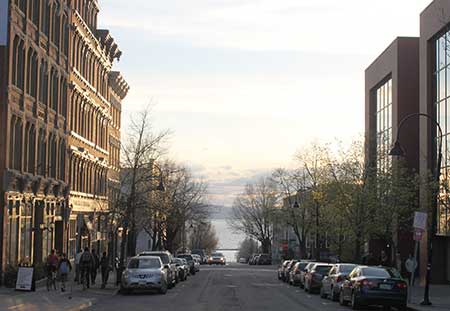Landscape Lenses
Cultural Landscape
 The cultural landscape of Vermont can be seen as a rich text with deep layers of story and meaning waiting to be read. To understand the human side of the Vermont landscape, one has to learn to look at it in a different way. Even the most ordinary and easily overlooked object—such as a telephone pole or an old brick house—contributes to this history and tells a story.
The cultural landscape of Vermont can be seen as a rich text with deep layers of story and meaning waiting to be read. To understand the human side of the Vermont landscape, one has to learn to look at it in a different way. Even the most ordinary and easily overlooked object—such as a telephone pole or an old brick house—contributes to this history and tells a story.
Human use of the Vermont landscape began some 11,000 years. Archeological excavations have revealed evidence to us about how humans lived on the landscape in a time period we call prehistory. However, today, most of the cultural features of the landscape that we take for granted—such as our cities and towns—were created by the European settlers beginning 200-300 years ago.
You might say that our social biography is woven into the physical fabric of our surroundings. If we look more closely at the landscape that we live upon, we can see the evolution of both our cultural and natural history. And perhaps most importantly, we can choose what we want our impact on the landscape to be for future Vermonters.